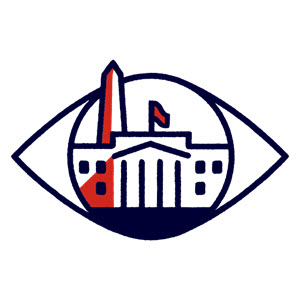Agencies Issue Extended Time Frame Relief for Employee Benefits Plans in Response to COVID-19

On April 29, 2020, the Employee Benefits Security Administration (EBSA) of the Department of Labor and Internal Revenue Service (IRS) of the Department of Treasury issued final regulations providing relief for employee benefits plans, employer, labor organizations, and other plan sponsors, plan fiduciaries, participants and beneficiaries, and service providers subject to the Employee Retirement Income Security Act of 1974 (ERISA) affected by the COVID-19 outbreak. In addition, EBSA issued additional guidance via EBSA Disaster Relief Notice 2020-01 and COVID-19 FAQs for Participants and Beneficiaries. Together, the guidance provides important information and relief intended to assist the employee benefits community in adapting to circumstances arising as a result of the COVID-19 outbreak.
Extension of Certain Time Frames for Employee Benefits Plans, Participants and Beneficiaries Affected by the COVID-19 Outbreak
Under the regulation, all group health plans, disability and other employee welfare benefits plans, and employee pension benefits plans subject to ERISA, are required to disregard the period beginning March 1, 2020, and ending 60 days after the announcement of the end of the COVID-19 National Emergency Declaration for purposes of determining the mandatory periods and dates with respect to:
- Special enrollments under the Health Insurance Portability and Accountability Act;
- COBRA continuation coverage elections;
- COBRA continuation premium payments;
- Individual notification of a plan of a COBRA-qualifying event or determination of disability;
- Filing deadline for an individual to file a benefits claim;
- Deadline to file an appeal of an adverse benefits determination; and
- Deadline for requesting an external review after receipt of an adverse benefits determination.
The regulation provides helpful examples for each of the areas for which an extension is granted to illustrate how the extension of time frames would work in practice. Below is a sample illustration:
Example 2 (Special enrollment period). (i) Facts. Individual B is eligible for, but previously declined participation in, her employer-sponsored group health plan. On March 31, 2020, Individual B gave birth and would like to enroll herself and the child into her employer's plan; however, open enrollment does not begin until November 15. When may Individual B exercise her special enrollment rights?
(ii) Conclusion. In Example 2, the Outbreak Period is disregarded for purposes of determining Individual B's special enrollment period. Individual B and her child qualify for special enrollment into her employer's plan as early as the date of the child's birth. Individual B may exercise her special enrollment rights for herself and her child into her employer's plan until 30 days after June 29, 2020, which is July 29, 2020, provided that she pays the premiums for any period of coverage.
The regulation can be found at: https://www.govinfo.gov/content/pkg/FR-2020-05-04/pdf/2020-09399.pdf.
EBSA Disaster Relief Notice 2020-01
The EBSA Disaster Relief Notice 2020-01 (Disaster Relief Notice) generally confirms the relief granted by the final rules, noting that plans will not be treated as failing to operate in accordance with their plan terms solely as a result of complying with the extended time frames. Moreover, the Disaster Relief Notice provides that plans and responsible fiduciaries will not violate ERISA with respect to the mechanism of delivering the ERISA-required notices so long as plans and responsible fiduciaries deliver the notices in good faith, including as appropriate, via electronic means, assuming there is a reasonable belief the participant has access to electronic means. The Disaster Relief Notice also confirms that the Department of Health and Human Services will likewise exercise enforcement discretion and adopt similar extended time frames for non-federal governmental group health plans and health insurance issuers governed by the Public Health Service Act.
Pension plans that permit plan loans must comply with certain verification requirements, such as spousal consent, in granting loans. In recognition of challenges that pension plans may face, the Disaster Relief Notice describes additional relief for pension plan sponsors with respect to the administration of plan loans, including required loan verification procedures and timing of forwarding loan repayment and plan contributions. The Disaster Relief Notice also provides clarity regarding the application of the regulation to the timing of blackout notices required when pension plans will temporarily suspend, limit or restrict a participant's ability to direct investments, obtain loans or obtain other distributions from the plan. Ordinarily an advance notice is required not less than 30 days prior to such blackout period. The Disaster Relief Notice expressly states the relief granted by the regulations applies to the blackout notice requirements.
The Disaster Relief Notice can be found at: https://www.dol.gov/agencies/ebsa/employers-and-advisers/plan-administration-and-compliance/disaster-relief/ebsa-disaster-relief-notice-2020-01.
COVID-19 FAQs for Participants and Beneficiaries
Finally, EBSA also issued a series of FAQs intended to assist participants and beneficiaries in understanding their rights and responsibilities under ERISA. The FAQs focus on health and pension benefits, including providing answers regarding continued coverage and how to claim retirement benefits under a plan while a place of employment is temporarily shut down and opportunities to elect other coverage upon loss of employer-provided coverage. The FAQs provide helpful links to additional resources related to health plan benefits, COBRA continuation coverage and pension plans.
Sample FAQs are provided below:
Q: If my place of employment temporarily closes because of the COVID-19 outbreak, am I still covered by my employer's group health plan?
As long as the employer exists, continues to sponsor a health plan, and employs you, and you continue to meet your employer's eligibility requirements, you would generally remain covered under your existing health plan, even if the employer's physical location closes. For information on coverage through a particular group health plan, review the plan's Summary Plan Description (a document often referred to as an SPD or insurance booklet that describes your health coverage). Contact the plan administrator and request a copy if you don't have one. The plan administrator may be able to send you one by email or direct you to a website where the SPD is posted. Note that many plans require employee contributions, and those contributions are likely still due, even if you are not being paid and those contributions are no longer being automatically deducted from your wages or salary. If so, you may need to make this payment yourself.
Q: To preserve my right to receive group health coverage under certain health-care coverage provisions, like COBRA and special enrollment periods, I have to provide documentation and notices to my plan within a certain time frame. Are any of these time frames being extended?
Yes. The Joint Notice, mentioned on page 1 provides extra time for participants and beneficiaries of group health plans to meet certain deadlines affecting COBRA continuation coverage, special enrollment, filing claims for benefits, appeals of denied claims and external review of certain claims. For disability, retirement and other plans, participants and beneficiaries have extra time to make claims for benefits and appeal denied claims. Plans, plan administrators and employers have extra time to provide certain COBRA notices.
The COVID-19 FAQs for Participants and Beneficiaries can be found at: https://www.dol.gov/sites/dolgov/files/EBSA/about-ebsa/our-activities/resource-center/faqs/covid-19.pdf.
ADP Compliance Resources
ADP maintains a staff of dedicated professionals who carefully monitor federal and state legislative and regulatory measures affecting employment-related human resource, payroll, tax and benefits administration, and help ensure that ADP systems are updated as relevant laws evolve. For the latest on how federal and state tax law changes may impact your business, visit the ADP Eye on Washington Web page located at www.adp.com/regulatorynews.
ADP is committed to assisting businesses with increased compliance requirements resulting from rapidly evolving legislation. Our goal is to help minimize your administrative burden across the entire spectrum of employment-related payroll, tax, HR and benefits, so that you can focus on running your business. This information is provided as a courtesy to assist in your understanding of the impact of certain regulatory requirements and should not be construed as tax or legal advice. Such information is by nature subject to revision and may not be the most current information available. ADP encourages readers to consult with appropriate legal and/or tax advisors. Please be advised that calls to and from ADP may be monitored or recorded.
If you have any questions regarding our services, please call 855-466-0790.
ADP, LLC.
One ADP Boulevard,
Roseland, NJ 07068
Updated on May 5, 2020



